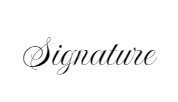Free Compliance Communication Plan Template
Compliance Communication Plan
I. Introduction
The compliance communication plan serves as a strategic roadmap for effectively disseminating changes to compliance policies, procedures, or regulations throughout the organization. By ensuring clear and comprehensive communication, we uphold our commitment to regulatory compliance and ethical conduct.
II. Objectives
-
Clear Communication:
-
Clearly and precisely communicate changes in compliance measures, avoiding ambiguity.
-
-
Comprehensive Understanding:
-
Make sure all employees understand their compliance duties.
-
III. Audience Analysis
-
Target Audience:
-
This plan encompasses all employees, from frontline staff to senior management, ensuring universal awareness and adherence.
-
-
Communication Preferences:
-
Adjust communication strategies to diverse preferences like email updates, workshops, and intranet alerts.
-
IV. Message Development
-
Use simple language in messages to improve understanding for all employees.
-
Use real-life examples to highlight the importance of compliance changes in daily operations.
V. Communication Channels
-
Use various communication channels like email, team meetings, bulletin boards, and digital platforms to connect with all employees.
-
Use in-person meetings like town halls or department briefings to quickly discuss and solve queries.
VI. Timeline
-
Create a timeline to coordinate communication with compliance change rollouts for timely implementation.
-
Include flexibility in the schedule for unexpected situations or needed clarification.
VII. Stakeholder Engagement
-
Involve key stakeholders like compliance officers, department heads, and employee representatives during the planning and execution phases.
-
Encourage a collaborative setting where stakeholders contribute ideas to improve the communication method.
VIII. Feedback Mechanism
-
Set up a basic feedback system like special emails or anonymous suggestion boxes for addressing employee communication and issues.
-
Regularly track and quickly respond to feedback, showing dedication to transparency and accountability.
IX. Training and Education
-
Create detailed training and educational materials for various employee roles about compliance standards.
-
Offer interactive workshops and Q&A sessions to provide employees with opportunities for hands-on learning and clarification.
X. Monitoring and Enforcement
-
Establish robust monitoring procedures to track compliance adherence and identify potential areas of non-compliance.
-
Clearly outline the consequences of non-compliance and ensure consistent enforcement to uphold organizational integrity and regulatory requirements.
XI. Evaluation
-
Define measurable criteria for evaluating the effectiveness of the compliance communication plan, such as employee comprehension rates and adherence levels.
-
Solicit feedback from employees and stakeholders through surveys, focus groups, or one-on-one discussions to gather qualitative insights for continuous improvement.
XII. Signatures
We hereby acknowledge that we have reviewed and approved the Compliance Communication Plan outlined above:

[Your Name]
[Your Position]
[Date]